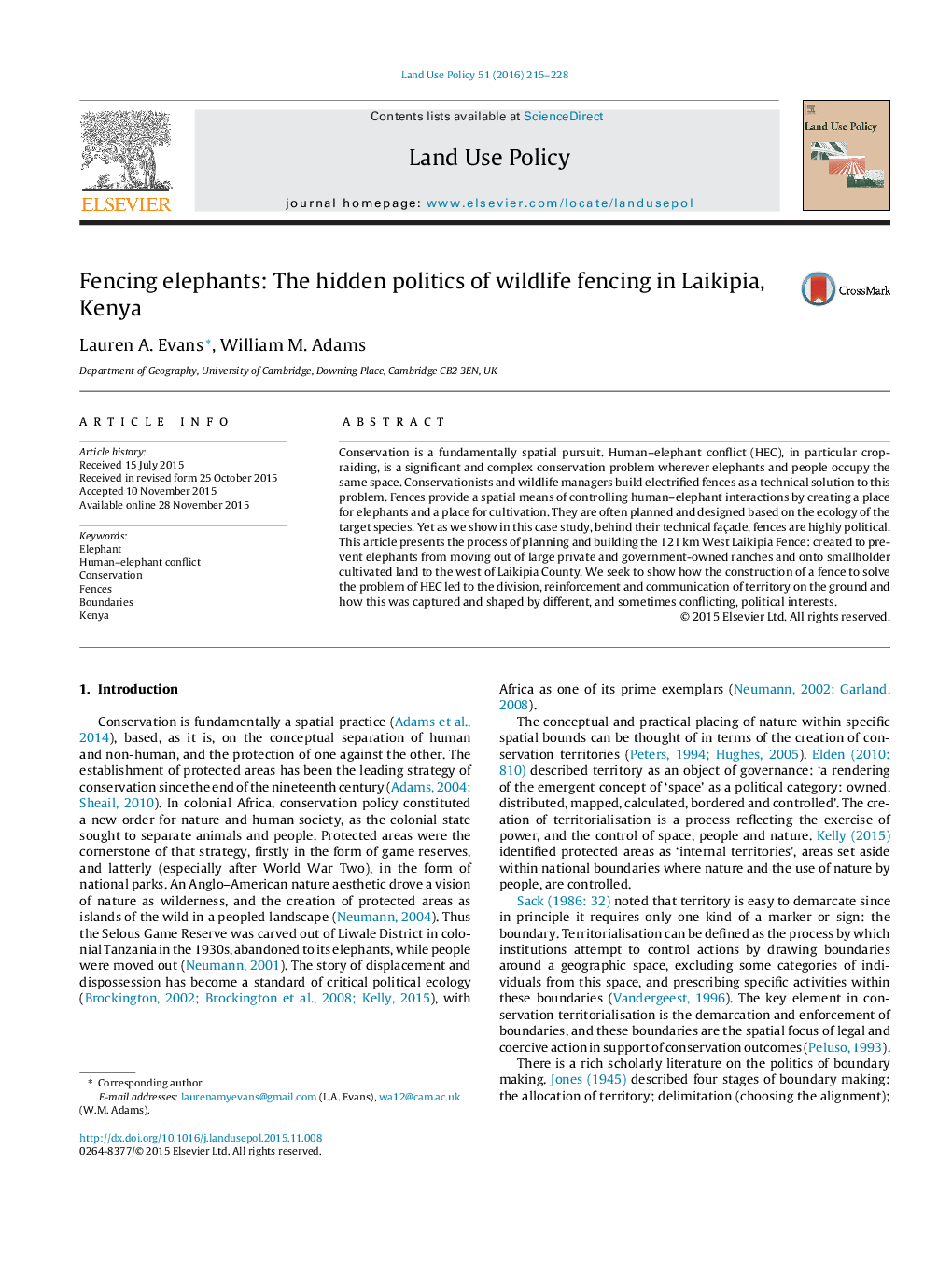| کد مقاله | کد نشریه | سال انتشار | مقاله انگلیسی | نسخه تمام متن |
|---|---|---|---|---|
| 92908 | 160101 | 2016 | 14 صفحه PDF | دانلود رایگان |
• Electrified fences are used as a technical panacea to human-elephant conflict.
• Politics underpin the technical and anti-political process of fence construction.
• Fences embody the power dynamics and politics of stakeholders.
• Fences define territory which is captured by different political interests.
Conservation is a fundamentally spatial pursuit. Human–elephant conflict (HEC), in particular crop-raiding, is a significant and complex conservation problem wherever elephants and people occupy the same space. Conservationists and wildlife managers build electrified fences as a technical solution to this problem. Fences provide a spatial means of controlling human–elephant interactions by creating a place for elephants and a place for cultivation. They are often planned and designed based on the ecology of the target species. Yet as we show in this case study, behind their technical façade, fences are highly political. This article presents the process of planning and building the 121 km West Laikipia Fence: created to prevent elephants from moving out of large private and government-owned ranches and onto smallholder cultivated land to the west of Laikipia County. We seek to show how the construction of a fence to solve the problem of HEC led to the division, reinforcement and communication of territory on the ground and how this was captured and shaped by different, and sometimes conflicting, political interests.
Journal: Land Use Policy - Volume 51, February 2016, Pages 215–228
